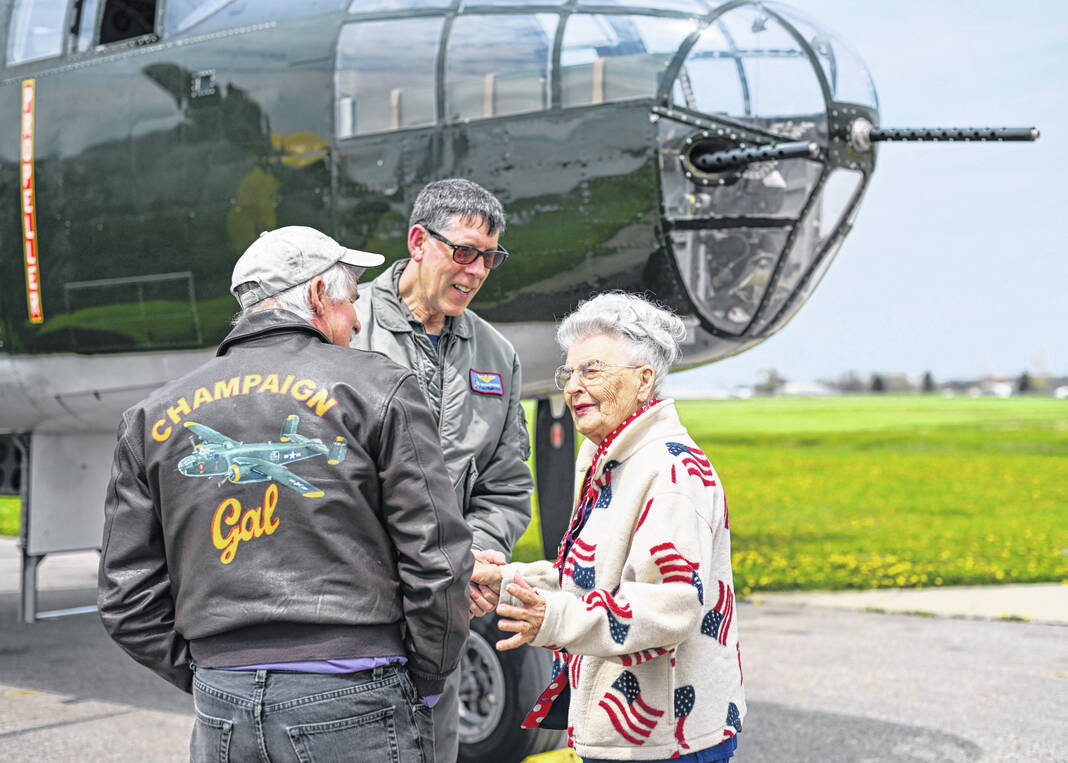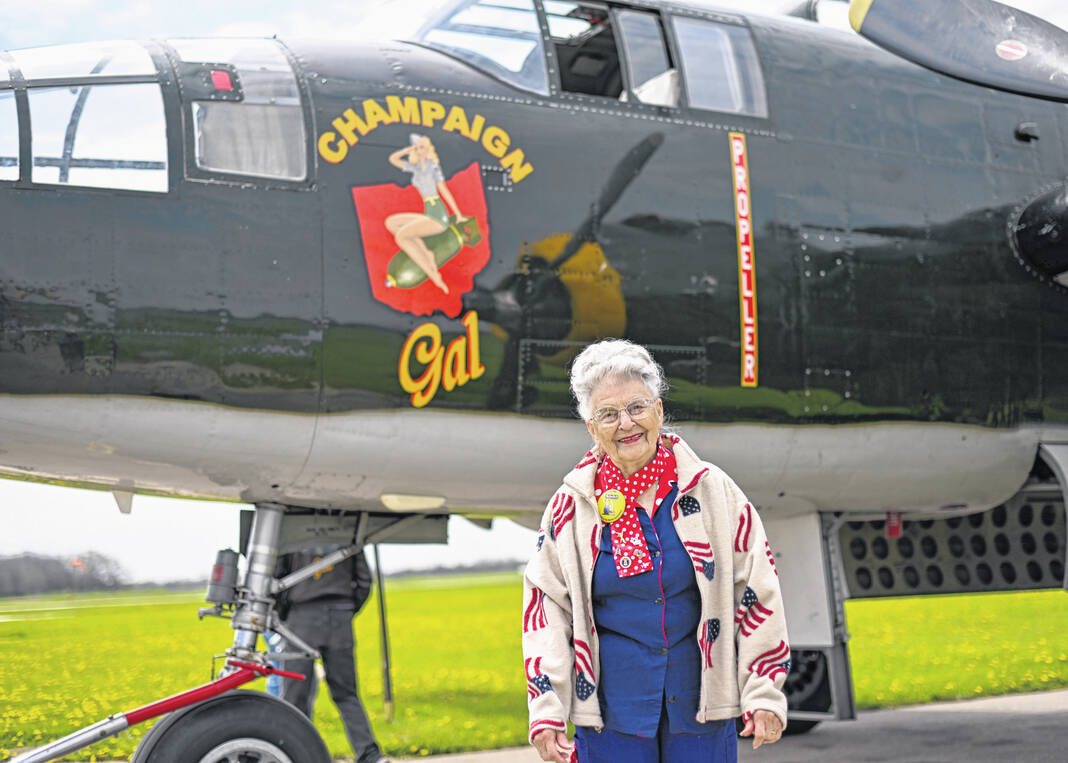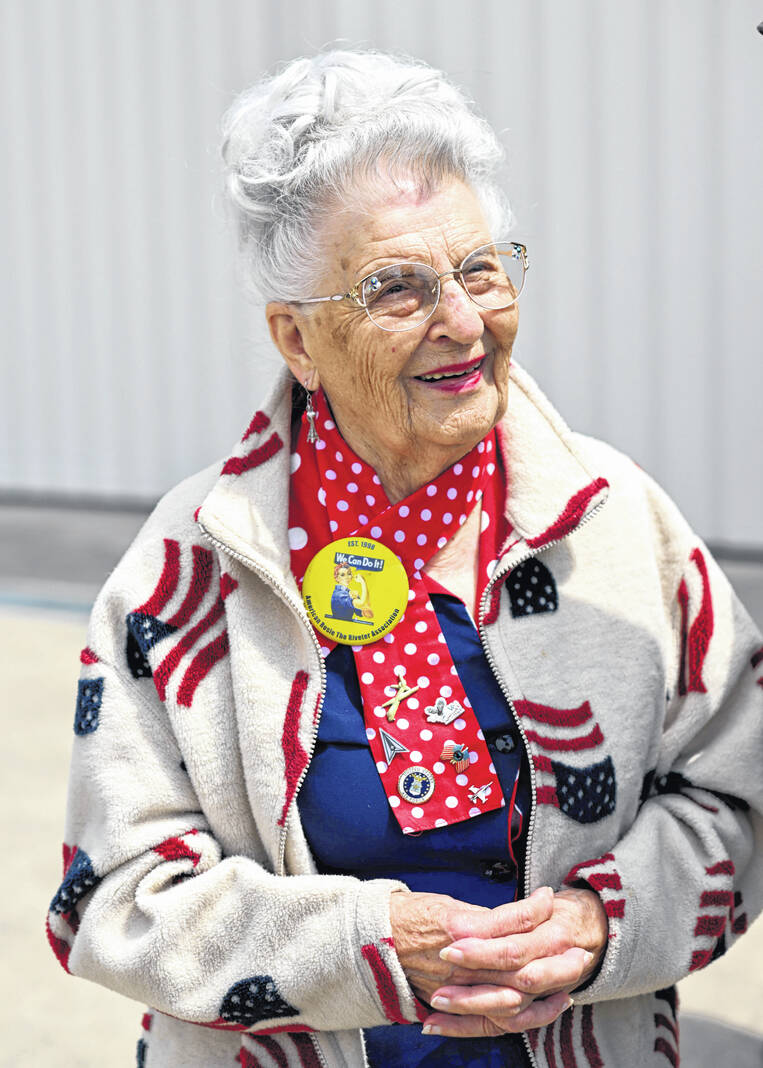


At 96 years young, Mae Krier is a real-life “Rosie the Riveter,” a catch-all term referencing the women who flooded factories and shipyards during World War II to build the planes, ships and bombs needed to thwart Hitler’s Germany and a bellicose Japan.
As it happens, Krier was an actual riveter at the Boeing Aircraft Co. during World War II. She started bucking rivets at 17 years old on B-17s in Seattle.
Krier came to the Champaign Aviation Museum on Thursday, chatting with volunteers who work on restoration of World War II bombers, including the B-17 and the B-25.
During her visit, Krier viewed restoration projects while volunteers Eric Kindig and Bill Weidenhammer pulled the B-25 from the hangar onto the tarmac for Mae to see up close.
According to information provided by the Champaign Aviation Museum, women during World War II worked in a variety of positions previously closed to them. The aviation industry saw the greatest increase in female workers.
More than 310,000 women worked in the U.S. Aircraft industry in 1943, composing 65 percent of the industry’s total work force (compared to just 1 percent in the pre-war years). The munitions industry also heavily recruited women workers, as illustrated by the U.S. government’s “Rosie the Riveter” propaganda program.
The call for women to join the work force during World War II was meant to be temporary and women were expected to leave their jobs after the war ended and men came home. The women who did stay in the work force continued to be paid less than their male peers and were usually demoted.
But after their selfless efforts during World War II, men could no longer claim superiority over women, who had enjoyed and even thrived on a taste of financial and personal freedom. Many wanted more. The impact of World War II on women changed the work force forever and women’s roles continued to expand in the post-war era.




